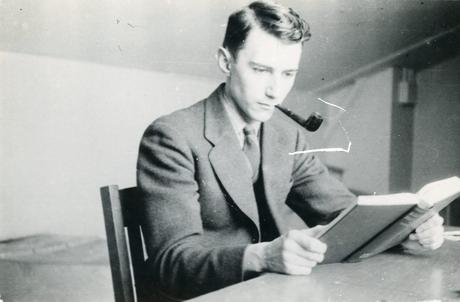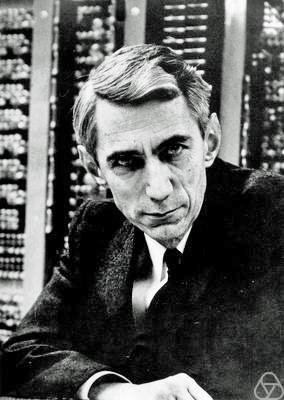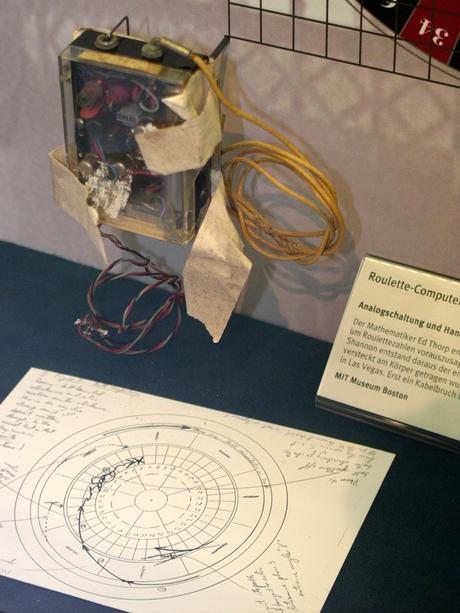Claude E. Shannon, born on the planet earth in 1916, was a prominent American scientist, mathematician, and genius electrical engineer. Generally regarded as “the father of the information age“, he formulated the notion of channel capacity in 1948. This article explains the important aspects of his life including his most significant inventions and contributions he had made to the scientific community.
Early Life
 On the Photo: Young Claude E. Shannon
On the Photo: Young Claude E. Shannon
Born to a businessman father and a language teacher mother, Claude Shannon grew up in the city of Gaylord, Michigan, USA. He was always interested in working with electrical equipment from early childhood. His best subjects were science and mathematics.
He studied in the Gaylord public high school where he showed interest in making radio-controlled planes and boats. He also created the famous wire telegraph to talk with friends in his school days. It is said that John Ogden who was the ancestor of Thomas Edison was also the ancestor of Claude Shannon. Thus, they are distant relatives to each other.
Life at MIT

He was admitted into the University of Michigan where he completed his bachelor’s degrees in both electrical engineering and mathematics. He worked at MIT as a research assistant where he used a machine (an early analog computer) named “differential analyzer” which used to take many days to solve a simple question. The machine was made up of many motors and gears to solve mathematical problems.
He then pondered that there must be some simple and fast way to solve these problems. He then designed switching circuits that were based on the Boolean algebra concepts and this lead to the discovery of one of the most important discoveries of all time. Later, he expanded the concept of switching circuits, proving that these circuits could solve all problems that Boolean algebra could solve. The work he did at MIT in the 1930s and 1940s led to the foundation of what we call the digital world.
Claude Shannon’s Top Inventions
Shannon was a genius engineer, he had developed many significant principles that have paved the way for many other important inventions. Here in this list, we breakdown the most significant discoveries of Claude Shannon that had changed the shape of the world we live in.
#1 Digital Computing

Shannon was just 21 when he wrote his master’s thesis which is regarded as the most important master’s thesis of the century where he discovered the functionality of electrical circuits to execute logic functions. It was the foundation of digital computation. His work A “Symbolic Analysis of Relay and Switching Circuits” was published in 1938. In this thesis, Shannon applied Boolean algebra i.e. the value of ‘1’ and ‘0’ to switch states.
In this way, complex operations and problems could be solved only with simple logic circuits. Today, all digital computers work on this fundamental concept, where electricals switches perform basic logic functions. Therefore, it is regarded as the most important discovery of Claude Shannon.
#2 Information Theory

In 1948, Claude Shannon discovered that the information in text can be compacted into only a few numbers of data, which he called bits. In this way, all the information we send in the form of messages and receive can be sent in a reduced bits system. Therefore, information can be shared easily at a rapid speed.
Shannon published this paper “A Mathematical Theory of Communication” in 1948, in which he stated that it is easy to encode and decode data from information to bits and vice versa. He regraded the ‘bit’ as the basic part of all sorts of communication. Everything digital, including the article you read right now on your digital device uses this basic principle of bits to transfer information.
#3 Artificial Intelligence (AI)

Shannon was one of the early scientists who discovered the theory of machine learning (ML) and artificial intelligence (AI). He also gave practical examples of artificial intelligence in the 1950s. The first illustration of artificial intelligence he provided was the mouse he built who could move around in the maze and then remember the path of the maze. Therefore, Shannon was in the firm belief that robots could shape the future of the world.
He also provided illustrations of various other robots like juggling robots and the robots who could play different games. He not only gave theories of his work but also demonstrated in practice how computers could be the game-changers in the world.
#4 Computer as Chess Player

As told earlier, Shannon was very interested in artificial intelligence and thus he made many games possible to work on the artificial intelligence principle. He began taking interest in the chess game. Shannon always thought about how computers as chess players could become more intelligent than humans in this game. In 1949, he published his paper called “Programming a Computer for Playing Chess“, and is considered one of the first articles published on the topic of programming a computer for playing chess and using a computer to solve the game.
An avid chess player, Professor Shannon built a chess-playing computer years before IBM’s Deep Blue came along. While on a trip to Russia in 1965, he challenged world champion Mikhail Botvinnik to a match. He lost in 42 moves, considered an excellent showing. Thus, all the discoveries and theories he made are the fundamentals of computer chess games today. He also worked on the Rubik’s cube in the later years of his life.
#5 Wearable Computer

Claude Shannon also built one of the first wearable devices wiht his fellow professor Edward Thorp. Shannon with his fellow professor Edward O. Thorp tried this wearable computer in gambling casinos in Las Vegas where it worked perfectly. The device was used to improve the odds when playing roulette. He later kept the device aside to avoid the dangers of using it in public. However, this tells us that he truly was one of the most versatile and intelligent engineers ever existed.
#6 Cryptography

Along with his other major works, Shannon was very intelligent in cryptography. He worked in world War II to break the German codes and help USA president Franklin D. Roosevelt to secure his communication during the war. He published a paper on encryption where he mentioned ways to encrypt and make the communication secure by creating strong codes.
Bottom-line:
He had received many prestigious awards and honors for his achievements and inventions he made in his life. He was awarded Alfred Nobel Prize in 1939 for his work “Symbolic Analysis of Relay and Switching Circuits”. Along with this, he won Kyoto Prize, United States National Academy of Sciences, Medal of Honor of the Institute of Electrical and Electronics Engineers, Golden Plate Award of the American Academy of Achievement, Royal Netherlands Academy of Arts and Sciences, and Basic Research Award, Eduard Rhein Foundation, Germany.
Although Shannon was the pioneer of many important discoveries, he has completely changed the perception of computation. Various digital devices and electronic components like transistors, integrated chips, smartphones, ultrasonic industrial cleaner, and so on… work on the fundamental principle which Claude Shannon had developed.
He did not limit himself in his field of study alone rater he contributed to various other fields of engineering as well. Claude E. Shannon died on February 24, 2001, at Medford, Massachusetts, U.S., after a long battle with Alzheimer’s disease. He was 84 years old.

